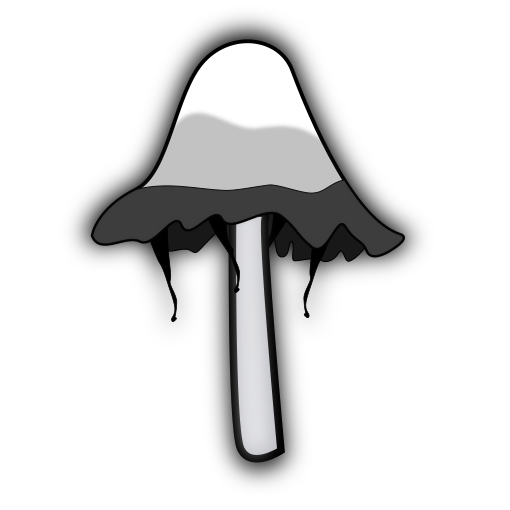licking uranium is only “maybe not the best idea”?
renzhexiangjiao
- 0 Posts
- 18 Comments

 19·4 days ago
19·4 days agoshe looks like misa from death note
by number of organisms, biomass,
species count, or something else?edit: ok not species count because there’s only one species of human
I used the wrong word, I meant to say physical, as opposed to virtual
I still have my analogue scientific calculator from the times when I had to take maths exams at uni
they would have to know when OP took the picture, idk if you can figure it out easily

I’m much more in favour of good insulation rather than AC. Mostly because it consumes a huge amount of energy and it can contribute to UHI.

 5·9 days ago
5·9 days agoi bet they’re cheering Duda on right now, even though the guy is a far-right nutjob

 28·9 days ago
28·9 days agohonestly most goods from china don’t deserve their bad reputation anymore. I don’t mean shit from aliexpress or temu, I mean cars, computers, smartphones etc.
deleted by creator

 15·10 days ago
15·10 days agoI wonder if the papers were also written by an LLM

 8·11 days ago
8·11 days agoif dividers are there, I don’t hugely mind standing right next to someone tbh

 3·11 days ago
3·11 days agothey look yummy

 23·11 days ago
23·11 days agowarn other people of their presence, publicly shame them
whoa what game is this?
Ender, short for enderman

 1·18 days ago
1·18 days agovery late reply, I saw your post only now:
I’m in a similar situation to you, I also learned Chinese before Japanese. I went to Chinese classes once every two weeks and didn’t do much independent study, so it wasn’t ever very serious, and I would say that even after 7ish years I couldn’t really converse much, also due to the fact that I hadn’t had any opportunities to speak to native speakers of Chinese. However, one thing I really focused on in my study was writing, and by the end I recognized 1000+ hanzi. Then I kinda abandoned it for a few years, and only two years ago I started with Japanese.
So, with this experience, I would say it helps A LOT in two aspects of the language: kanji recognition and vocabulary.
Firstly, kanji. The vast majority of kanji share meaning with their corresponding hanzi. There are a few cases where the meanings diverged, but these aren’t that common. Also, in most cases they look the same as traditional chinese characters. Japanese kanji sometimes have a 旧字体 (kyuujitai) and a 新字体 (shinjitai) form. Kyuujitai and traditional chinese are the same in 99% cases. Shinjitai can be thought as the japanese equivalent of simplified characters. In case of Japanese, the writing reform was much less extreme, only a small fraction of the characters changed, but most of the changed ones happen to be frequently used. Sometimes the shinjitai characters evolved in the same direction as their chinese simplified equivalents, e.g. 点, 国, 広. Sometimes they evolved in a different direction: 氷, 囲, 缶.
Japanese kanji fundamentally have two types of readings: kunyomi (native japanese reading) and onyomi (chinese reading). Kunyomi readings are native japanese words that share the meaning with the character. Example: uma is Japanese for horse, and so 馬 has kunyomi “uma”.
Onyomi are readings that resemble the chinese reading at the time words containing that character were borrowed. Example: 馬 ba like in the word 馬力 bariki - horsepower. Most of it happened when Middle Chinese was spoken in China, so onyomi are most similar to Middle Chinese readings. They were adapted to Old Japanese phonology and since then both Chinese and Japanese phonology has evolved a lot so modern Mandarin readings can be quite distant from modern Japanese onyomi readings. Mandarin specifically has lost the -k and -t codas (corresponding to Japanese -ku/-ki and -tsu/-chi), but many other Chinese languages haven’t, for example Cantonese, so you might find onyomi to sound closer to modern Cantonese than Mandarin.
One interesting thing I found while investigating the relationship between onyomi and Mandarin readings is that the characters whose Japanese readings end in ku/ki/tsu/chi are almost always read with the 2nd (rising) or the 4th (falling) tone in Mandarin. Once you learn onyomi for many characters whose Mandarin reading you know already, you’ll notice patterns and you’ll be able to predict the onyomi. It is also somewhat possible to predict the Mandarin reading given an onyomi, however, it’s much harder since there are much more possible onset-rime combinations in Mandarin.
Some characters have multiple onyomi readings. This is often due to the fact that words using these readings were borrowed into Japanese at different times, for example, there are some buddhist terms that have made it into Japanese much earlier than most borrowings from Chinese, so they use older readings.
Finally, vocab: a significant portion of Japanese vocabulary are words borrowed from Chinese. They are usually kanji compounds containing two or more kanjis. They are read with onyomi, so they sound somewhat similar to the modern Chinese pronunciation. Example: 銀行 ginkou is cognate to Mandarin yínháng, they have the same meaning and sound similarly.
I realize I diverged from the topic a few times so let me summarise: If you learn Japanese after learning Chinese, for every kanji you learn, you will already know its meaning and will be able to predict its onyomi, leaving only kunyomi to memorise. Additionally, you will already know the meaning of most of the borrowings from Chinese, which make up a significant portion of Japanese vocab.
 8·18 days ago
8·18 days agothey should ban chatgpt and gemini while they’re at it. but of course it won’t happen, these two are american, and america is our supposed “ally”, so of course they can have our data

chinese text is ai generated